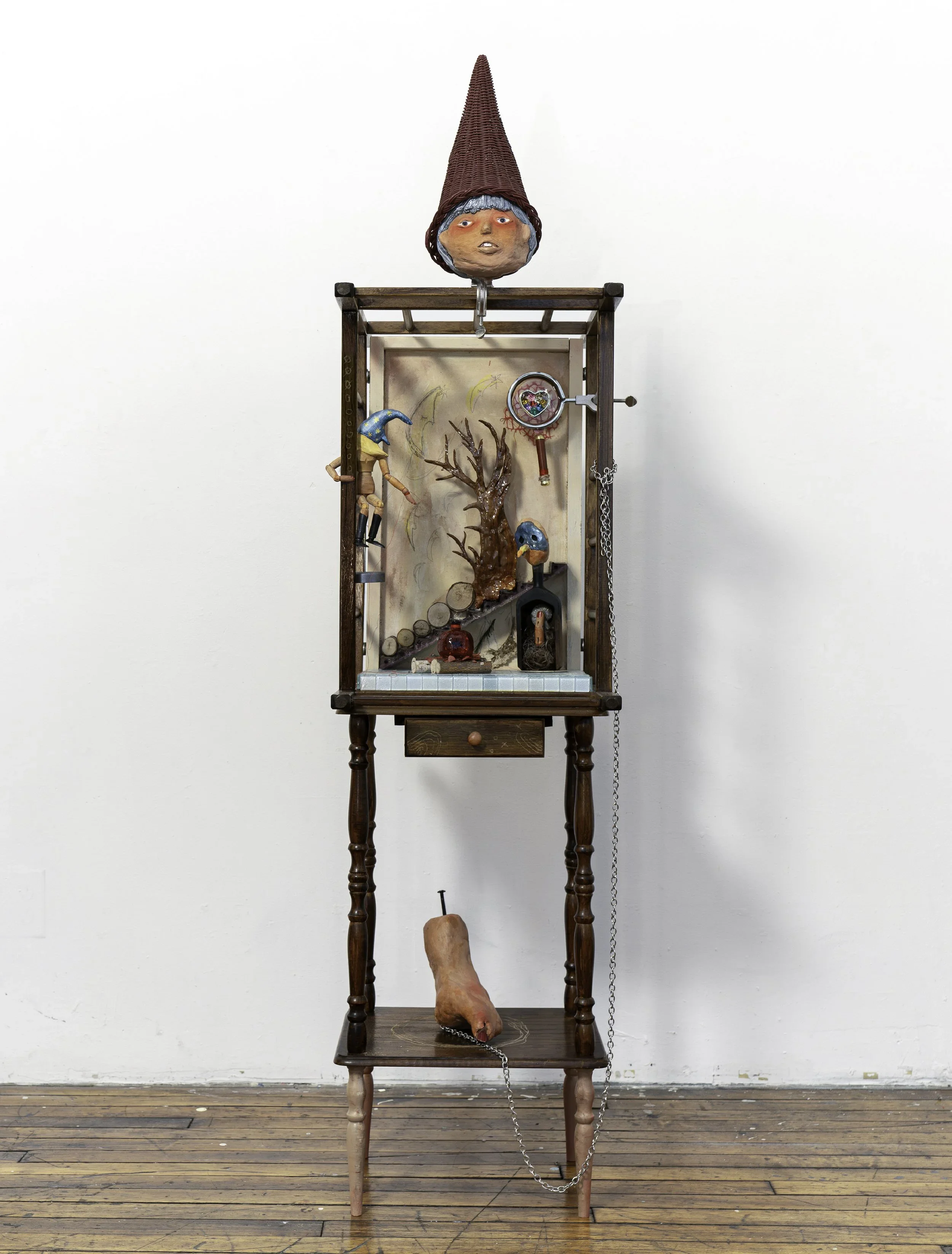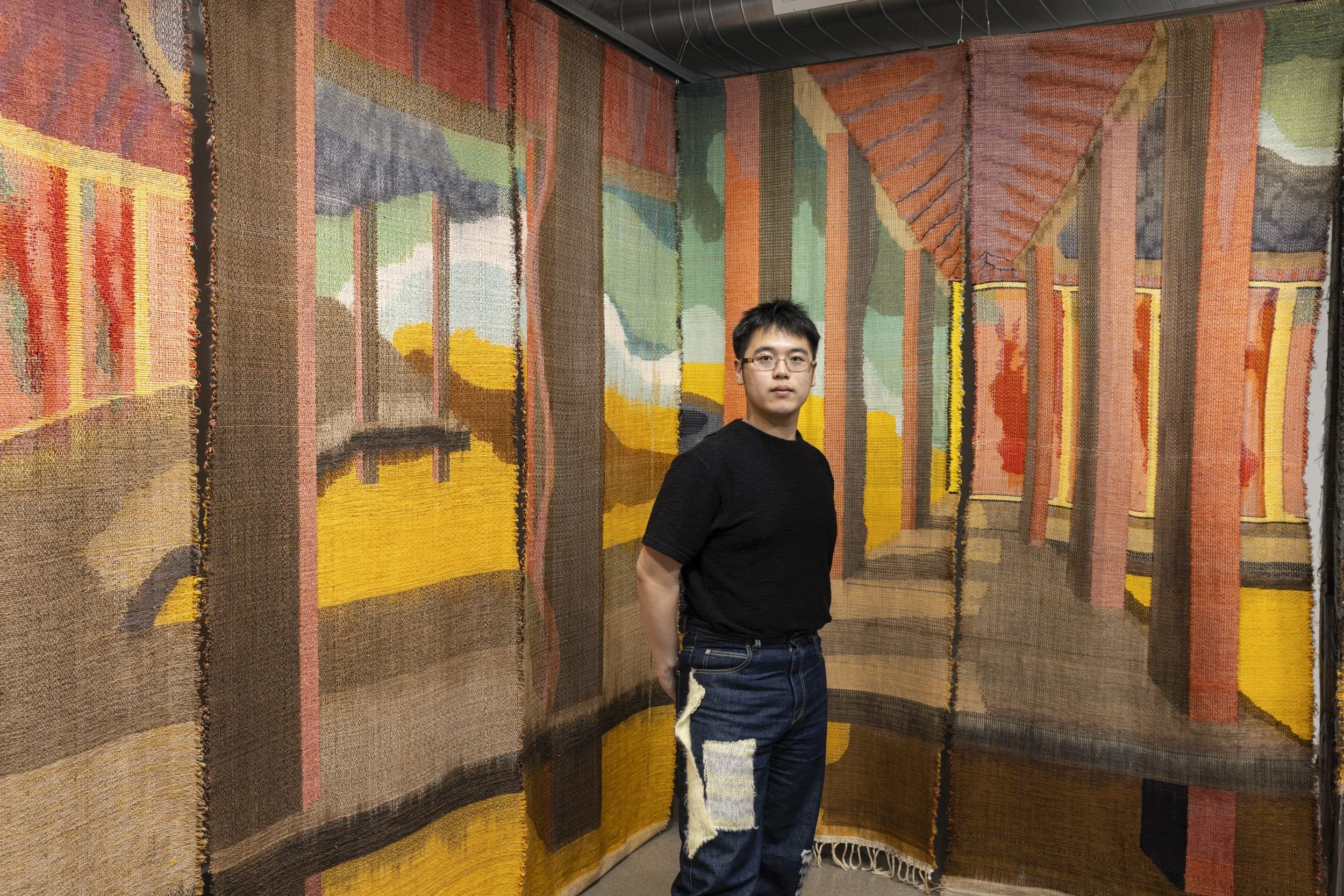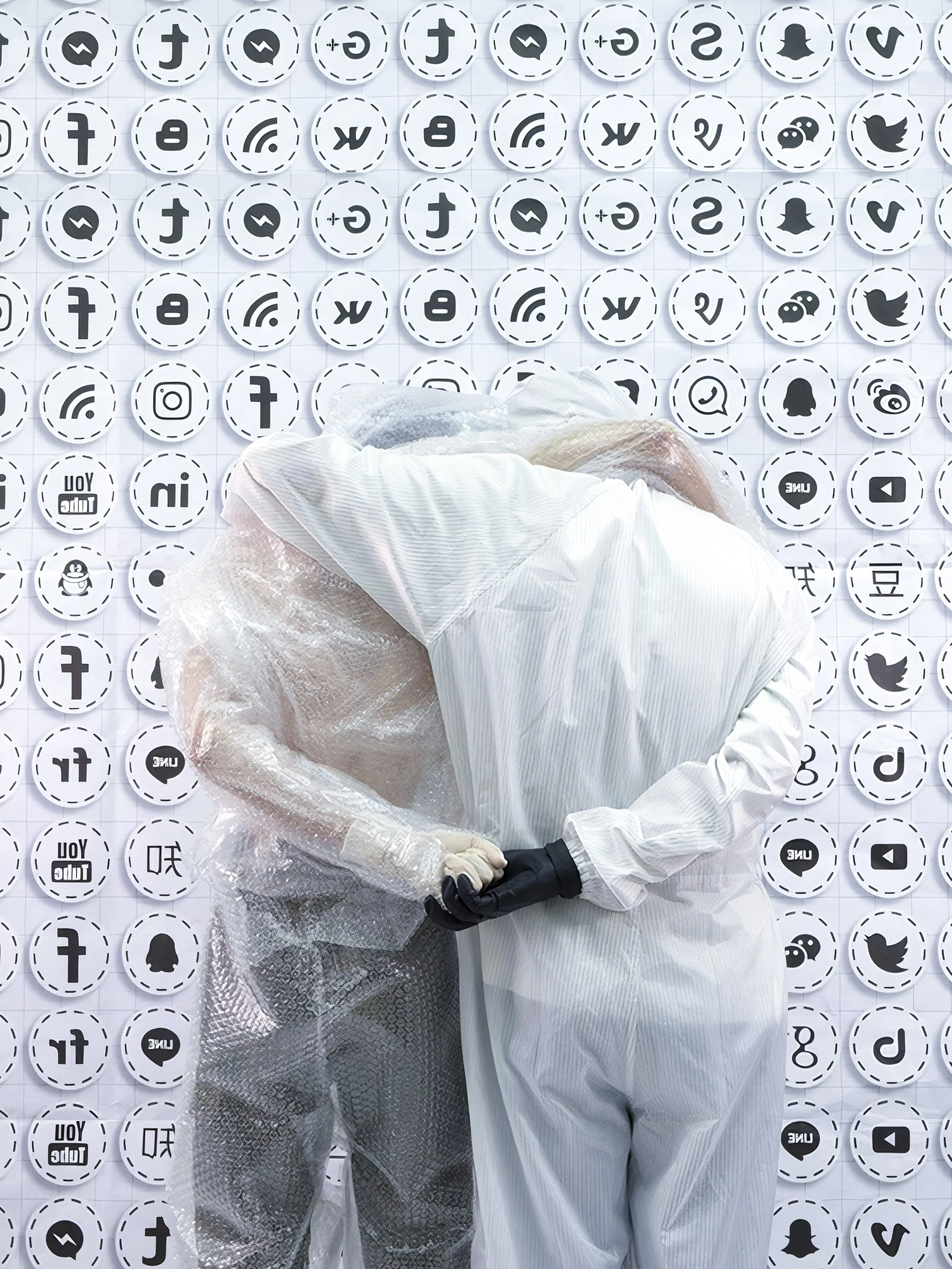10 Questions with Yasuaki Matsuura
Yasuaki Matsuura (b. 1990) is a Tokyo-based contemporary artist whose practice centres on the theme of “new memory.” He uses the camera, its form, function, and cultural role, not just as a tool, but as both subject and medium.
He graduated from Kanazawa College of Art in 2013 and spent over a decade at Canon Inc., where he designed some of the company’s most iconic cameras. His work includes models from the EOS DSLR series and, in 2018, the groundbreaking full-frame mirrorless system EOS R and RF 24–105mm F4 L IS USM lens, Canon’s first major system overhaul in 30 years.
As a lead product designer, Matsuura became a defining figure in the camera industry. In 2019, he launched a corporate venture project within Canon, challenging the spec-driven nature of the market. As project lead, he successfully developed concept-driven cameras such as IVY REC, expanding the public’s perception of what a camera could be.
In 2024, Matsuura formally began his career as a contemporary artist. He now creates sculptural and conceptual works that use the physicality of the camera to examine memory, perception, and presence in an era shaped by automation and virtualisation. He is recognised as the only artist working exclusively through the language of the camera, treating it not only as a device, but as a metaphor for how we record and engage with human experience.
Yasuaki Matsuura - Portrait
ARTIST STATEMENT
Yasuaki Matsuura is a Tokyo-based artist who explores the theme of “New Memory” through the creation of fully functional cameras. As automation and virtualisation accelerate across every aspect of daily life, Matsuura sees a growing crisis: the diminishing value of memory itself. In a world where moments are effortlessly captured and archived by machines, the emotional and human weight of remembering is quietly being lost.
In response, he builds cameras from scratch, not as nostalgic objects, but as instruments that reawaken awareness of the act of recording. His works invite users to slow down, to look, and to feel the presence of time and others. Each camera is not just a device, but a proposition: that memory must be earned, not simply stored.
With over a decade of experience as a lead designer at Canon, and rooted in Tokyo, a global hub of camera culture, Matsuura brings technical mastery and conceptual clarity to his practice. His work reclaims photography as a human ritual, proposing new forms of memory-making for an age at risk of forgetting what it means to remember.
Eye to Eye, ABS Resin, Aluminum, Polycarbonate, Acrylic Urethane Paint, 138×80××50 mm, 2024 © Yasuaki Matsuura
INTERVIEW
You spent over a decade designing some of Canon’s most iconic cameras before transitioning into contemporary art. How has your experience as a product designer shaped your artistic vision and approach today?
Working on camera development at Canon gave me a deep opportunity to think about how people record their lives and hold onto memories. Without that experience, I don’t think I would be making art about memory today, it was the foundation that led me here.
My background as an industrial designer is also a core part of who I am as an artist. It has deeply shaped my commitment to the physical quality of my work. In the art world, there are many pieces where the value lies mainly in the concept, and the physical form can sometimes feel secondary. That has its place, of course, but for me, the object itself matters deeply.
I’ve spent years confronting objects seriously and respectfully. Through that, I’ve come to believe that form has its ownpower, something silent, but undeniable. That belief continues to guide my artistic practice. I don’t just want to make conceptual proposals; I want to make physical presences that speak on their own terms.
Eye to Eye, ABS Resin, Aluminum, Polycarbonate, Acrylic Urethane Paint, 138×80××50 mm, 2024 © Yasuaki Matsuura
Working within a corporate environment often means balancing creativity with market demands. What personal or professional moments at Canon most influenced your current perspective on memory and technology?
One of the most formative experiences was leading the development of a camera called the IVY REC. At the time, I had been designing Canon’s EOS DSLR series, professional-grade cameras with a long legacy. It was rewarding, but also a highly disciplined and technical process.
Then I joined a new in-house venture team aimed at creating a camera for younger users. As the team lead, I had the chance to speak directly with a wide range of people about how they used cameras in their daily lives. That experience changed how I saw the role of technology.
I came to realise that a camera’s value isn’t only about technical specs. Many users weren’t just interested in high performance, they were struggling with how their memories were being shaped, or even taken over, by their smartphones. It made me reflect deeply on how we relate to moments, how we remember, and what it means to truly capture something beyond the image.
That project was a turning point. It helped me see cameras not just as tools, but as cultural objects, and ultimately, as a medium through which I could explore memory as an artist.
You treat the camera not only as a tool but as the very subject and medium of your art. Could you walk us through your creative process? How do you design and build these fully functional cameras as conceptual works?
My work begins not with materials or forms, but with reflection. I carry many personal thoughts and questions around memory, how it’s formed, what we lose when it becomes automated, and how we might reclaim it. I take daily notes whenever something strikes me, and then set aside quiet, focused time each week to think more deeply. While the physical camera may catch attention first, I’d say the conceptual phase is often the longest part of the process.
In terms of making, I bring a full industrial design process into the art space, which I believe is quite unique. Just because something is art doesn’t mean the form or material can be arbitrary. I believe there’s always a best shape, a most honest structure, to carry an idea.
So I start with sketches, move through dozens of prototypes, and carefully refine every detail, including things like edge radii and surface finishes. My background in industrial design allows me to give form to conceptual inquiries with precision and intentionality. Some people in the art world say this hybrid approach stands out. For me, it simply feels necessary, because memory deserves that kind of care.
Eye to Eye, ABS Resin, Aluminum, Polycarbonate, Acrylic Urethane Paint, 138×80××50 mm, 2024 © Yasuaki Matsuura
Eye to Eye, ABS Resin, Aluminum, Polycarbonate, Acrylic Urethane Paint, 138×80××50 mm, 2024 © Yasuaki Matsuura
Eye to Eye, ABS Resin, Aluminum, Polycarbonate, Acrylic Urethane Paint, 138×80××50 mm, 2024 © Yasuaki Matsuura
Your practice blends sculptural craft with technological precision. How do you navigate the tension between function, aesthetics, and concept in your pieces?
It’s definitely a challenge. These elements often pull in different directions. But I’ve come to see that very tension as a source of innovation, not a limitation. The key is not to compromise too early, but to stay with the problem long enough to find a solution where concept, function, and form don’t cancel each other out, but amplify one another.
Prototyping plays a big role in that process. I often start with rough models, just to get the idea off the page and into physical space. Sometimes a concept that feels profound in theory doesn’t translate when built. Other times, unexpected discoveries emerge through the act of making. That iterative, experimental mindset comes directly from my experience in industrial design.
In the end, I try to treat each project not as a problem to solve, but as a balance to tune, where thought and form are constantly adjusting to each other until something essential comes into focus.
The idea of “New Memory” is central to your work. How do you define it, and what motivated you to explore the crisis of memory in our society?
For me, “New Memory” is the reinvention of memory itself. Technological advances have made it easier than ever to record our lives, but in that ease, we risk losing something essential: the weight of remembering. The physical and emotional processes that turn an experience into a memory are fading. Touching a moment directly, letting it sink into the mind and body, that very human act is being eroded by the rise of smartphones and social media.
“New Memory” is my response to that crisis. It’s a quiet resistance against forgetting what it means to truly see, feel, and remember. Memory, after all, is not data, it’s a trace of experience, a living sensation. I see my work as an alternative technology: one that restores memory to the hands of the human, not just the machine.
Having spent years developing cameras, I’ve witnessed both the beauty and the consequences of recording culture. As an artist, I now use the camera not only as a device, but as a lens to question the very nature of memory itself.
What Icon, Glass Mirror, ABS resin, Polycarbonate, Acrylic Urethane Paint, 1080×865×30 mm, 2024 © Yasuaki Matsuura
In your view, what is being lost when memory becomes effortless and automatic? Do you see your cameras as tools of resistance, reminders, or something else entirely?
As memory becomes effortless and automatic, we begin to surrender the act of remembering itself. We press the shutter and feel reassured, as if saving the image completes the experience. But true memory is more complex: it settles slowly into the body, then rises unexpectedly with time. In exchange for easy recording, we are losing the felt depth of memory, and that, to me, is a quiet crisis of our age.
My cameras are not designed for efficiency, but for presence. Rather than “tools of resistance,” I think of them as prompts, devices that reopen the sensory circuit between the self and the world. They invite the user to look again, feel again, and be present, not through a screen, but through direct engagement with the person or scene in front of them. These are not cameras for documentation. They are instruments for rediscovering the possibility of memory.
Looking at your body of work so far, are there recurring formal elements or design choices that intentionally reflect your ideas about memory and presence?
I aim to convey a message through form, something that speaks instantly and lingers in memory. For this reason, the frontal graphic silhouette of my pieces is particularly important. I spend a lot of time refining the balance between simplicity and originality so that the form communicates even before it is fully understood.
Another key element is build quality. When dealing with a sensitive theme like memory, I believe the object itself must have integrity. Every detail, from materials and surface finish to weight and tactile presence, needs to feel essential and considered. A well-crafted object has a quiet authority, one that invites the viewer to pause, reflect, and trust the experience it offers.
Panorama, Aluminum, ABS Resin, Magnesium Alloy, Acrylic Urethane Paint, 202×149×115 mm, 2024 © Yasuaki Matsuura
Panorama, Aluminum, ABS Resin, Magnesium Alloy, Acrylic Urethane Paint, 202×149×115 mm, 2024 © Yasuaki Matsuura
Panorama, Aluminum, ABS Resin, Magnesium Alloy, Acrylic Urethane Paint, 202×149×115 mm, 2024 © Yasuaki Matsuura
Many of your works invite users to slow down and become conscious of the act of recording. Have you observed how audiences respond emotionally or intellectually to this invitation?
Most people approach my works with the muscle memory of recording, instinctively reaching for their smartphones. In front of pieces like What Icon? or SLR Sculpture, they prepare to take a photo, only to pause. The object shaped like a camera is, in fact, a mirror. What they’re about to capture isn’t the artwork, but themselves.
That moment of stillness is powerful. It’s when the automation of recording falls away, and viewers are returned to their own gaze, their own presence. Some laugh, some hesitate, and others grow quiet and contemplative. There’s a unique overlap between emotional reaction and intellectual realisation, something unexpected, yet deeply human.
My works aren’t meant to provide answers. They are designed to leave questions, gentle interruptions that insert a kind of quiet noise between the viewer’s body and memory. If something lingers afterwards, not as an image but as a shift in awareness, then the work has fulfilled its purpose.
As your practice evolves, do you envision experimenting beyond the camera itself? Do you plan to bring this concept to new mediums or art forms?
Possibly, yes. But for now, I feel that this journey with the camera is far from complete. The more I work with it, the more depth I discover. It’s not just a tool, it’s a mirror of our relationship to memory, technology, and time.
Rather than expanding into new mediums for the sake of variety, I want to continue exploring the theme of memory with as much depth and sincerity as possible. I believe it’s a subject worthy of a lifetime, and the camera, both in form and metaphor, still holds many layers I have yet to uncover.
What Icon, Glass Mirror, ABS resin, Polycarbonate, Acrylic Urethane Paint, 1080×865×30 mm, 2024 © Yasuaki Matsuura
Lastly, where do you see yourself and your work in five years from now? How do you plan to make an impact on the art world?
I’ve only just begun my journey as an artist, this is my first year, and I’m still largely unknown. My immediate goal is to present my work on major international platforms and introduce it to new audiences. Over the next five years, I plan to create pieces that leave a lasting impression. Some are already in the works, so please look forward to them.
As for impact, I hope to help shift the conversation in contemporary art toward a deeper appreciation of the physical quality of artworks. While strong concepts are essential, I believe that care, time, and craftsmanship also carry profound meaning. Many artists pour themselves into the material presence of their work, and I hope to be part of a movement that brings greater visibility to that dedication.
By the time that shift happens, when ideas and material presence are valued equally, I hope my work will already be part of what led us there.
Artist’s Talk
Al-Tiba9 Interviews is a curated promotional platform that offers artists the opportunity to articulate their vision and engage with our diverse international readership through insightful, published dialogues. Conducted by Mohamed Benhadj, founder and curator of Al-Tiba9, these interviews spotlight the artists’ creative journeys and introduce their work to the global contemporary art scene.
Through our extensive network of museums, galleries, art professionals, collectors, and art enthusiasts worldwide, Al-Tiba9 Interviews provides a meaningful stage for artists to expand their reach and strengthen their presence in the international art discourse.
























